Tap dance finds home in Library of Congress
| Published: 03-30-2016 12:00 PM |
Tap dance isn’t just for show anymore. Now it has found a home in the Library of Congress.
Constance Valis Hill, a Five College professor of dance at Hampshire College in Amherst and an accomplished tapper and dance historian, recently donated a 3,000-record chronology of tap dance to the library. According to Hill, it is the most comprehensive history of tap ever compiled.
Hill, 68, teaches dance history, performance theory, jazz, choreography, feminist performance and yoga. She splits her time between Northampton and Brewster, New York, where she runs a yoga studio, the Naima Center.
It took Hill 10 years to compile the database, which spans from 1898 to 2010. She also wrote a book based on her research, “Tap Dancing America: A Cultural History,” published in 2010 by Oxford University Press.
Tap, Hill says, is America’s first native dance form, but its history has not been well recorded. She says she felt committed to exposing the careers of talented dancers who have gone largely unrecognized.
“You’re talking about … a history that hasn’t been historicized, these dancers who have had lives, whose careers have really gone forgotten,” Hill said.
The database includes records of top tap dancers like Fred Astaire, Sammy Davis Jr., Shirley Temple, Bill Robinson and Savion Glover, but also digs deep to find tappers who weren’t stars of stage and screen.
Hill says she donated the database to the Library of Congress, on Feb. 2, so it could be widely used as a free research tool. It fills the gaps left in tap’s history by its frequent lapses in popularity throughout the 20th century. It is free to use and can be accessed through the Library of Congress website: www.loc.gov
Article continues after...
Yesterday's Most Read Articles
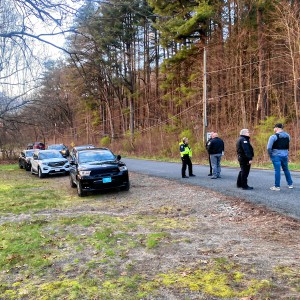 Police report details grisly crime scene in Greenfield
Police report details grisly crime scene in Greenfield
 On The Ridge with Joe Judd: What time should you turkey hunt?
On The Ridge with Joe Judd: What time should you turkey hunt?
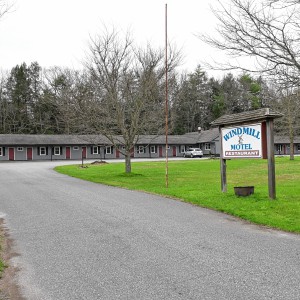 New buyer of Bernardston’s Windmill Motel looks to resell it, attorney says
New buyer of Bernardston’s Windmill Motel looks to resell it, attorney says
 Greenfield man arrested in New York on murder charge
Greenfield man arrested in New York on murder charge
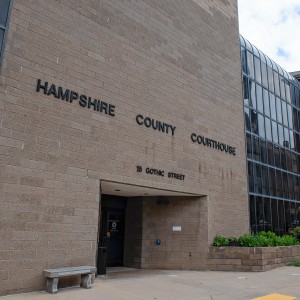 Man allegedly steals $100K worth of items from Northampton, South Deerfield businesses
Man allegedly steals $100K worth of items from Northampton, South Deerfield businesses
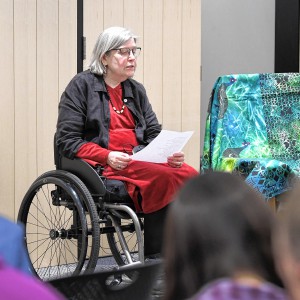 Joannah Whitney of Greenfield wins 33rd annual Poet’s Seat Poetry Contest
Joannah Whitney of Greenfield wins 33rd annual Poet’s Seat Poetry Contest
Jane Goldberg, a New York City tap dancer, writer and director who helped lead a tap resurgence of the 1970s, says the chronology will be extremely useful to the field.
“Overall, I would say this was a major labor of love, and much needed in the world of tap dancing and its lore,” Goldberg said.
Goldberg, whose biography is included in the database, founded the Changing Times Tap Dancing Co. Inc. in 1979. She worked with Hill when Hill directed the company’s all-woman tap musical “Sole Sisters,” written by Goldberg and performed at the Greenwich House in New York in 1985. Goldberg says Hill is the best person to have created such an extensive history.
“There is no one who I can think of that expresses enthusiasm for tap dancing, and is one of its champions, more than Constance Valis Hill,” Goldberg said.
The database sets tap’s history out in a decade-by-decade chronology.
Hill did considerable research across performance fields, using resource books and film and radio databases. She also relied on interviews she had done with tappers during her 20 years as a dance writer, as well as new interviews.
Once Hill compiled the information, she says, she was able to look across the years and see where tap has been and how it is changing.
She could see, for example, that in the swing era of the 1930s, tap performance onstage was concentrated in Harlem in New York, but was also popular in Hollywood musical films. She noted, also, a decline in its popularity in the 1950s, when tap performances were few and far between, and mainly relegated to TV shows.
“We have this generation of elder, incredible masters who basically go under in the ‘40s and the ‘50s” she said.
Hill says her book and database offer the first comprehensive history that includes the many talented female dancers who were tapping.
“The histories that have been written only included the men, so part of my writing this, and gathering a chronology, was really to gather the female tap dancers,” she said.
That took some digging: Most women tappers were working in chorus lines, Hill says, not as soloists and headliners.
“The coups of finding female performativity were really invigorating for me,” she said. “I felt like I could really even the playing field out.”
Hill’s own history
Though Hill has researched tap extensively, she says her interest in the history of the genre didn’t really begin until she left college.
Hill was born in 1947 to an Anatolian Greek family, and grew up in Astoria, New York, speaking only Greek. When she was 4, her parents, both first-generation Greek Americans, enrolled her in tap and ballet classes at the Wally Wanger Dance Studio in Manhattan, so she would learn to speak English before going to kindergarten.
Though she danced frequently while growing up, she was the first person in her family to graduate from college, and dancing became less of a priority. She earned a bachelor’s degree in English and speech in 1969 from the State University of New York at Albany and a master’s degree in rhetoric and public address in 1970 at the University of Massachusetts Amherst.
That same year, after graduating, she worked as a speech writer for Mayor John Lindsay in New York City before returning to dance in 1973 with a full scholarship from the Alvin Ailey School of Dance in New York City. According to Hill, the school gave her the scholarship because they believed she would be a good choreographer and teacher, if not a concert dancer.
“Sure enough they were really right,” Hill said. “I didn’t have a long dancing career but I certainly segued into choreography.”
At Ailey, she studied and started teaching jazz. She also ran the school’s dance history program, worked as a choreographer and began seriously studying tap dance. Eventually, she began writing about dance.
“I got to a point where I said, ‘I not only want to perform dance but I also want to write about dance,’ ” she said.
In the 1980s, Hill worked as a dance critic for The Schenectady Gazette and The Albany Times Union before earning a master’s degree in 1990 in dance research and reconstruction from the City College of New York. She also earned a doctorate in performance studies in 1998 from New York University.
She then began writing tap-dance biographies and transitioned to narrative work with her first book, “Brotherhood in Rhythm: The Jazz Tap Dancing of the Nicholas Brothers,” published in 2000 by Oxford University Press.
Hill came to Hampshire College as a Five College professor of dance that same year and decided to write a complete history of tap. This idea evolved into the database, along with its book counterpart.
“You’ve really got to publish the research tool because there’s much more in the research than there is in the book,” Hill said. “The book is just a little narrative.”
Debunking a stereotype
Hill says she wanted to bring attention to the cultural history of the genre and to debunk the stereotype of tap as a low art form.
“We still have a long history of critics in America categorizing tap dance as a dying art form and as a form of nostalgia,” she said. It’s an attitude, that Hill says has prevented tap from gaining its due prestige and recognition in the U.S.
“There’s more respect for tap globally.” she said.
But, she added, that is changing.
For example, Michelle Dorrance is a New York tap dancer and choreographer who received a 2015 MacArthur Fellowship (“Genius Grant”) for her work in the tap industry. And a new production of “Shuffle Along,” the musical that launched tap dance in America in the 1920s, will premiere on Broadway in April.
“It’s really, I think, a new renaissance. I talk about tap having nine lives,” she said. “It’s up and down, up and down. Now, it’s coming up again.”
Indeed, Hill argues, the support she received to write the book and to create the database is evidence of tap’s revival. She was awarded grants from the John D. Rockefeller and John Simon Guggenheim foundations, and the book won the de la Torre Bueno Prize, given each year to the author of an exceptional dance studies book.
“That the institutions, these dance institutions and the scholarly canon and academia, have ... recognized this, or included this, it’s monumental,” she said.
Letting go
After 10 years of work on the book and chronology, and 20 years before that as a dance critic and writer, Hill says she was ready to let her work go to the Library of Congress. The part-time yoga teacher decided to embrace the yoga philosophy of non-attachment, or letting go of what no longer serves you.
“Tap dance, because it’s been so contested and it’s come from such a painful legacy, you still have a lot of people out there who are holding onto their archives,” she said. “For me it was like let’s just do non-attachment. Just let me let it go.”
But, after spending so much time working on the archive, Hill says she did not expect to feel as good as she does about donating it.
“I never expected to get this much pleasure in donating it,” she said. “I’ve gotten so much love. Love that’s given me, you know, 30 more years to live.”
“Tap Dance in America” is listed under “Special Presentations” in the Performing Arts Encyclopedia of the Library of Congress. To access it, visit: www.loc.gov/performingarts
Viewers can search by genre, performer name, performance title or date, or browse through an alphabetical list of the records.

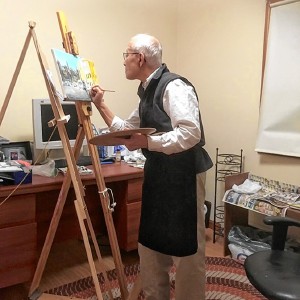 Proof that it’s never too late: Solo exhibit and free workshops honor the late Frederick Gao, a Belchertown resident who became a painter in his last five years
Proof that it’s never too late: Solo exhibit and free workshops honor the late Frederick Gao, a Belchertown resident who became a painter in his last five years Self-expression on display: ServiceNet members’ artworks on view at Greenfield Public Library through end of May
Self-expression on display: ServiceNet members’ artworks on view at Greenfield Public Library through end of May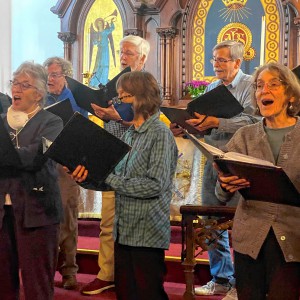 Embracing both new and old: Da Camera Singers celebrates 50 years in the best way they know how
Embracing both new and old: Da Camera Singers celebrates 50 years in the best way they know how Time to celebrate kids and books: Mass Kids Lit Fest offers a wealth of programs in Valley during Children’s Book Week
Time to celebrate kids and books: Mass Kids Lit Fest offers a wealth of programs in Valley during Children’s Book Week
